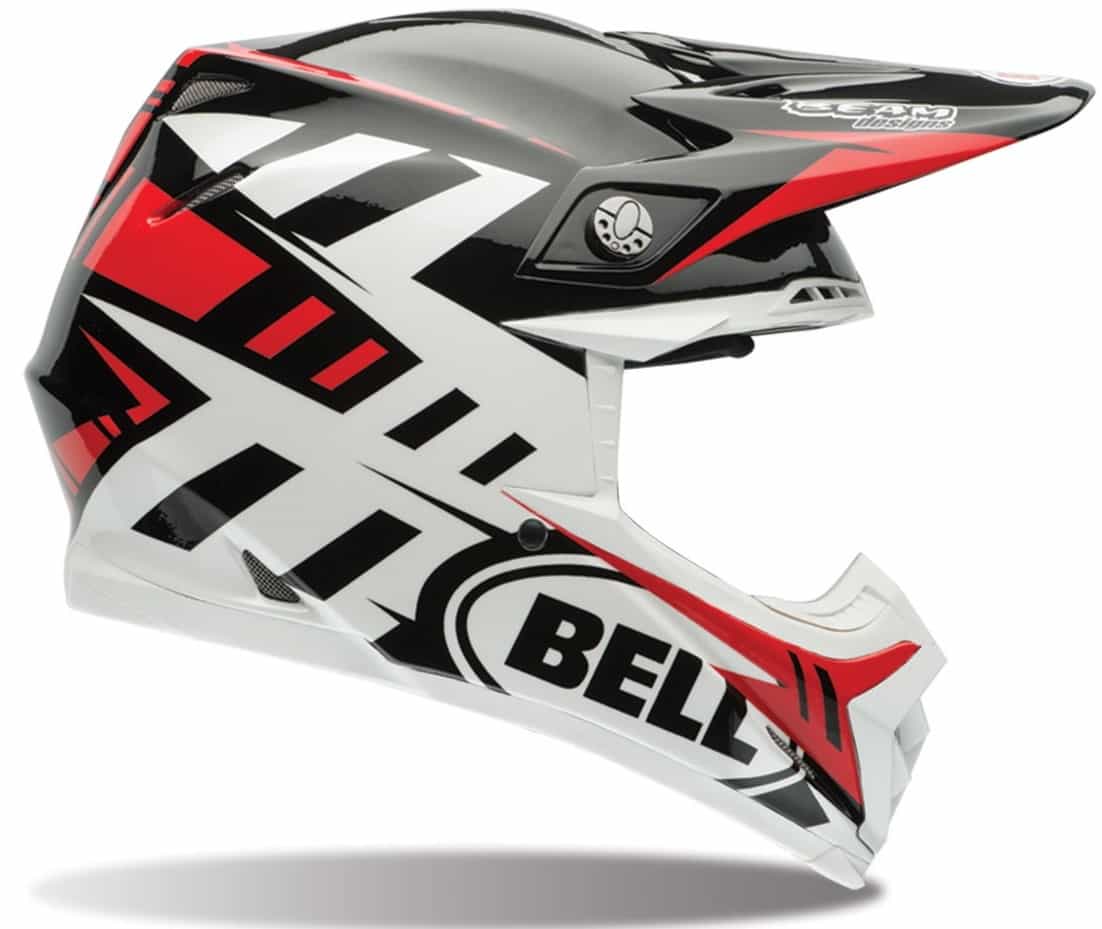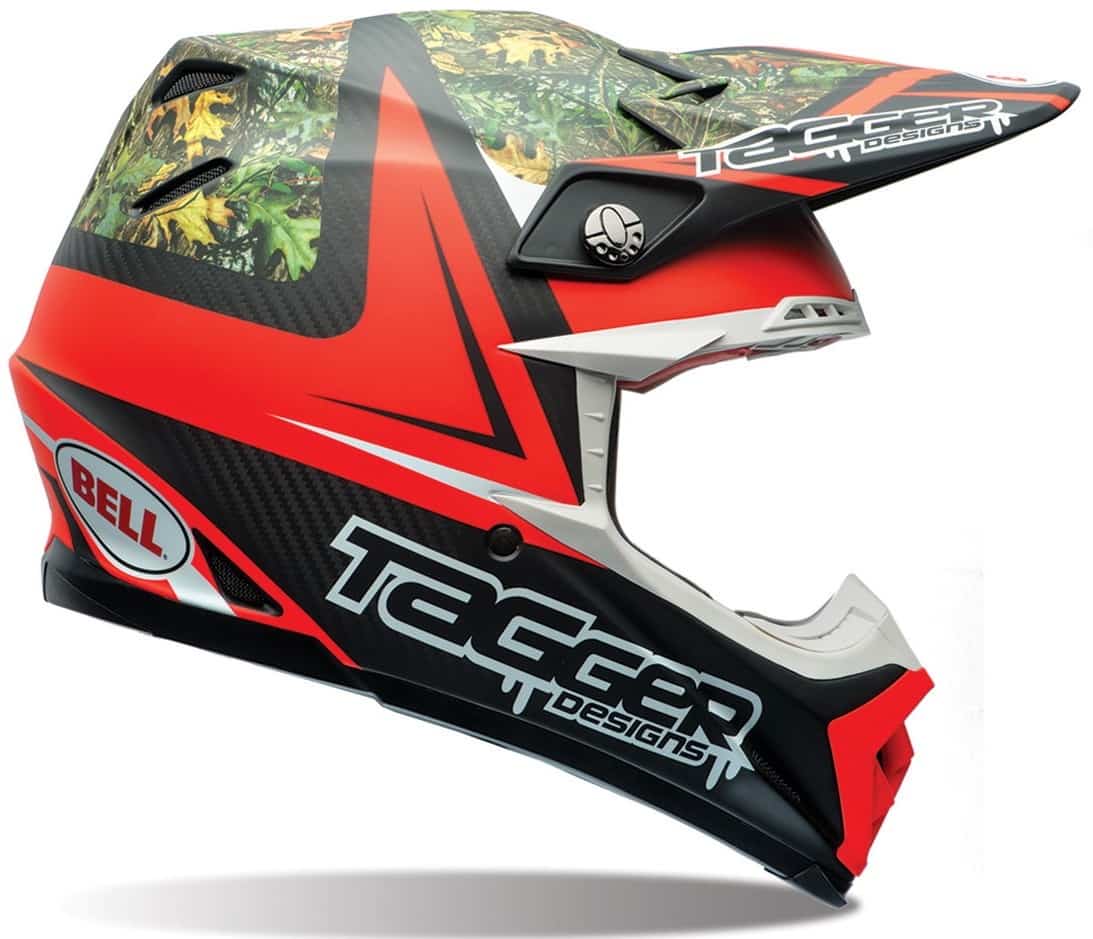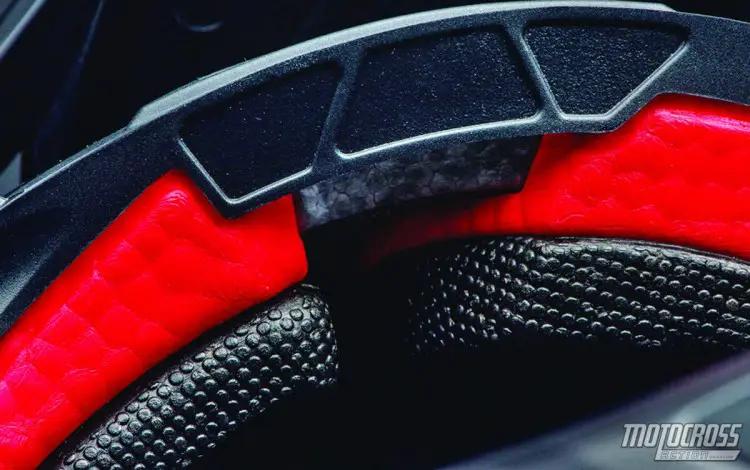MXA TEAM TESTED: BELL MOTO-9 FLEX HELMET
 WHAT IS IT? The Bell Moto-9 Flex has stepped up to the plate with concussion-protection numbers comparable to the safety standards of the popular 6D helmet.
WHAT IS IT? The Bell Moto-9 Flex has stepped up to the plate with concussion-protection numbers comparable to the safety standards of the popular 6D helmet.
WHAT’S IT COST? $649.95.
CONTACT? www.bellhelmets.com or your local dealer.
WHAT STANDS OUT? Here’s a list of things that stand out with the Bell Moto-9 Flex helmet.
 (1) Distinction. How can you tell the Moto-9 Flex and the original Moto-9 apart? You can’t, unless you look inside. On the outside, they are identical. From a marketing perspective, Bell should have made some cosmetic changes to differentiate the Flex from the standard Moto-9. It is human nature to want to flaunt your upscale purchases, which was why Hummers were so ostentatious during the boom decade. When people pay a premium for a product, it says something about their identity and social status. The original Moto-9 is an attractive helmet, but the Moto-9 Flex is $265 more expensive, so it should scream, “I’m different.”
(1) Distinction. How can you tell the Moto-9 Flex and the original Moto-9 apart? You can’t, unless you look inside. On the outside, they are identical. From a marketing perspective, Bell should have made some cosmetic changes to differentiate the Flex from the standard Moto-9. It is human nature to want to flaunt your upscale purchases, which was why Hummers were so ostentatious during the boom decade. When people pay a premium for a product, it says something about their identity and social status. The original Moto-9 is an attractive helmet, but the Moto-9 Flex is $265 more expensive, so it should scream, “I’m different.”
(2) Moving target. We want to give Bell a round of applause for stepping up to the plate, especially since 6D had hit a home run in terms of helmet safety. Bell invested countless hours and buckets of money into developing technology that it could call its own. The Moto-9 Flex’s system is not a clone of 6D’s ODS or another brand’s MIPS system. This was important to Bell, because it was not the first to make the leap in helmet safety. 6D beat Bell out of the box with the Volvo of motocross helmets.
(3) Safety. It is next to impossible to refute safety claims because virtually every helmet can pass the certification tests or deem the tests they don’t pass irrelevant. Ultimately, helmet safety comes down to selecting a certification process (ECE or Snell) and hanging your hat on those results. Thus, Bell can claim that it passes Snell 2010, while 6D touts its ECE 22.05 numbers. At the moment, the Bell Flex and 6D ATR-1 are at the head of the class in concussion management.
(4) Technology. The Bell Flex achieves its test numbers by combining three densities of foam into its shell. The liner closest to your head has medium-density foam (EPP). The middle liner in Bell’s ice-cream-sandwich design has the softest foam (EPO), and the outer layer is the firmest (EPS). Additionally, the foam liners are is segmented into six sections that each offer 5mm of slippage to help manage rotational movements. In the most basic terms, the inner liner of the Bell Moto-9 Flex is like a three-layer cake that has been sliced into six pie-shaped pieces.
(5) Comfort. The washable XT-2 extended-wear liner is firm enough to keep the helmet in place but soft enough to be very comfortable. There are different cheek-pad thicknesses to customize the fit.
(6) Features. The Flex keeps the features that we loved so much on the Moto-9: magnetic cheek pads, flexible flying-bridge visor, quick-flip visor screws and excellent ventilation (thanks to the segments).
WHAT’S THE SQUAWK? No complaints.

The Bell Flex rose to the bar that was set by 6D—and did it at a price that is $100 cheaper.






Comments are closed.